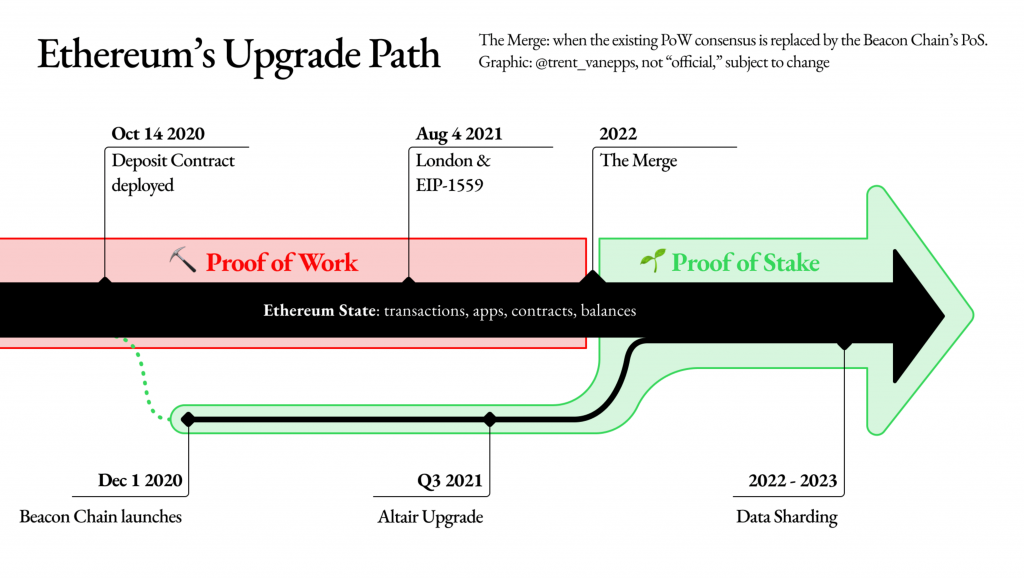Shakespeare’s “What’s in a name?” quote from Romeo and Juliet has its own fanbase. The overt connotation of the same revolves around how names, or the way things are called or labeled, are arbitrary when compared to the intrinsic qualities they come with or offer.
It is quite obvious that names, by themselves, do not hold worth or meaning. They merely act as labels to distinguish one thing from another and organize things on paper.
READ MORE: Vitalik Buterin Outlines Road Map Tagged “Endgame” for ETH 2.0
Now, token names in the crypto space have evolved with time. Older names were, more or less, rhyming/amended names of the already existing big coins, while with time, creativity and trends started influencing names.
Fun, dog-themed coins, for instance, are now named after prominent canine breeds, meta tokens are named after the underlying games/universes they represent, and so on and so forth.
Renaming; Ethereum’s way of notifying its evolving identity?
Well, Ethereum developers, quite recently, chose to bury the ‘Ethereum 2.0’ phrase once for all and replace it with something even more inclusive and technical. Via a recent blog post, the foundation announced it would start following the steps of its developers and start referring to ‘Eth2’ as the “consensus layer.”
By late 2021, notably, core developers stopped using the dilettante ‘Eth 1’ and ‘Eth 2’ terminology, and instead preferred ‘execution layer’ and ‘consensus layer’, respectively.
The rebrand reflects the fact that what’s been called Ethereum 2.0 is really more of a network upgrade rather than a whole new network.
The blog post clarified,
Eth1 → execution layer
Eth2 → consensus layer
Execution layer + consensus layer = Ethereum
To further elucidate, most major things are still set to change. It is just that the descriptor ‘Eth 2’ will no longer be used.
Ethereum is still on track to change its consensus mechanism from PoW to PoS. Alongside, mining, in which high-powered computers connected to the network compete to validate transactions so that they might mint new ETH for themselves, is also on its way out. The Ethereum roadmap, by and large, remains unchanged.
The features on Ethereum’s current roadmap (i.e. the merge, sharding) and future features will still happen on the same timeline.


Why consensus layer?
People from and outside the community intuitively perceive that Eth1 comes first and Eth2 comes after and the former will cease to exist after the latter is rolled out. Wiping off this preconceived notion is one of the many reasons why the foundation decided to rebrand things.
By removing Eth2 terminology, we save all future users from navigating this confusing mental model.
READ ALSO: What is HODL? 15 Popular Crypto Terms and Phrases
Further, it should be noted that malicious actors have attempted to use the Eth2 misnomer to scam users by telling them to swap their ETH for ‘ETH2’ tokens or they must somehow migrate their ETH before the Eth2 upgrade.
Parallelly, some staking operators have also represented ETH staked on the Beacon Chain with the ‘ETH2’ ticker. This has created confusion in the past, given the fact that staking users are not actually receiving an ‘ETH2’ token. No ‘ETH2’ token exists in the first place; it simply represents their share in that specific providers’ stake.
So now, with this updated terminology, the foundation hopes to bring clarity and help make the ecosystem safer.
Bringing in inclusivity was another main reason why the foundation decided to finalize the name change. Highlighting the same, their blog post concluded,
As the roadmap for Ethereum has evolved, Ethereum 2.0 has become an inaccurate representation of Ethereum’s roadmap. Being careful and accurate in our word choice allows content on Ethereum to be understood by the broadest audience possible.





